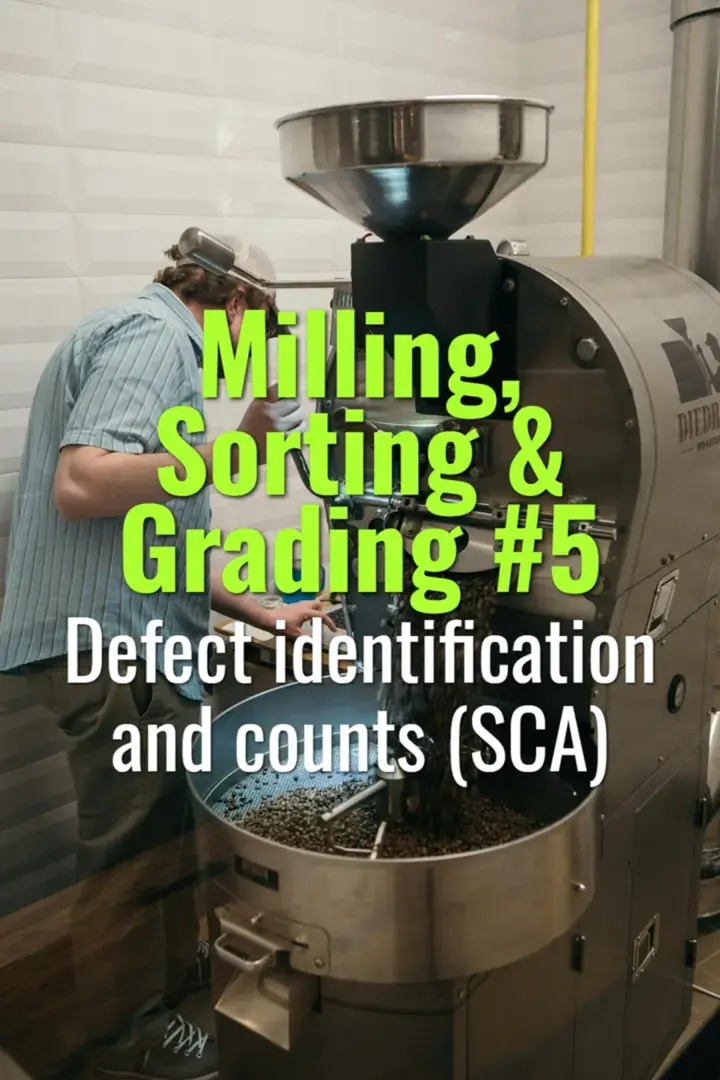Defect identification and counts (SCA)
This topic explains how defects are identified and counted in coffee according to Specialty Coffee Association (SCA) standards, why this matters for grading, and how it influences specialty classification.
- Coffee Basics Nerds
- 2 min read
Article 5 of 12 in Milling, Sorting & Grading/

What Are Defects?
- Defects are beans or foreign matter that negatively affect physical quality and cup quality.
- SCA standards classify defects into primary and secondary categories.
SCA Defect Classification
Primary Defects (severe impact)
- Examples: full black bean, full sour bean, large stones or sticks.
- Count: 1 primary defect = 1 full defect.
Secondary Defects (less severe)
- Examples: partial black, partial sour, insect damage, broken beans, small stones.
- Count: Multiple secondary defects add up to 1 full defect (e.g., 5 insect-damaged beans = 1 full defect).
SCA Sampling Method
- Standard sample size: 350g of green coffee.
- Inspect beans under good lighting on a defect board.
- Count and classify defects into primary or secondary categories.
- Calculate total full defect equivalents.
Grading Thresholds (SCA)
- Specialty Grade: ≤5 full defects per 350g sample.
- Premium Grade: 6–8 full defects.
- Exchange Grade (commercial): 9–23 full defects.
- Below Grade: 24+ full defects.
Why It Matters
- Defect counts directly determine whether a coffee qualifies as specialty.
- Buyers use SCA defect thresholds as a benchmark for contracts and pricing.
- High defect counts increase risk of off-flavors in cupping (earthy, moldy, phenolic).
Best Practices for Producers
- Implement strict cherry selection at harvest.
- Use flotation sorting to remove underripes/defects.
- Maintain cleanliness during drying and milling.
- Train staff in defect recognition and consistent grading.
Market Implications
- Specialty certification hinges on defect compliance.
- Export rejections occur if defect counts exceed buyer standards.
- Transparency in defect reporting builds trust with specialty buyers.
Lasting Importance
Defect identification and counts under SCA protocols are the foundation of specialty grading. They provide an objective standard that links farm practices to market classification, ensuring buyers and producers share a common language of quality.